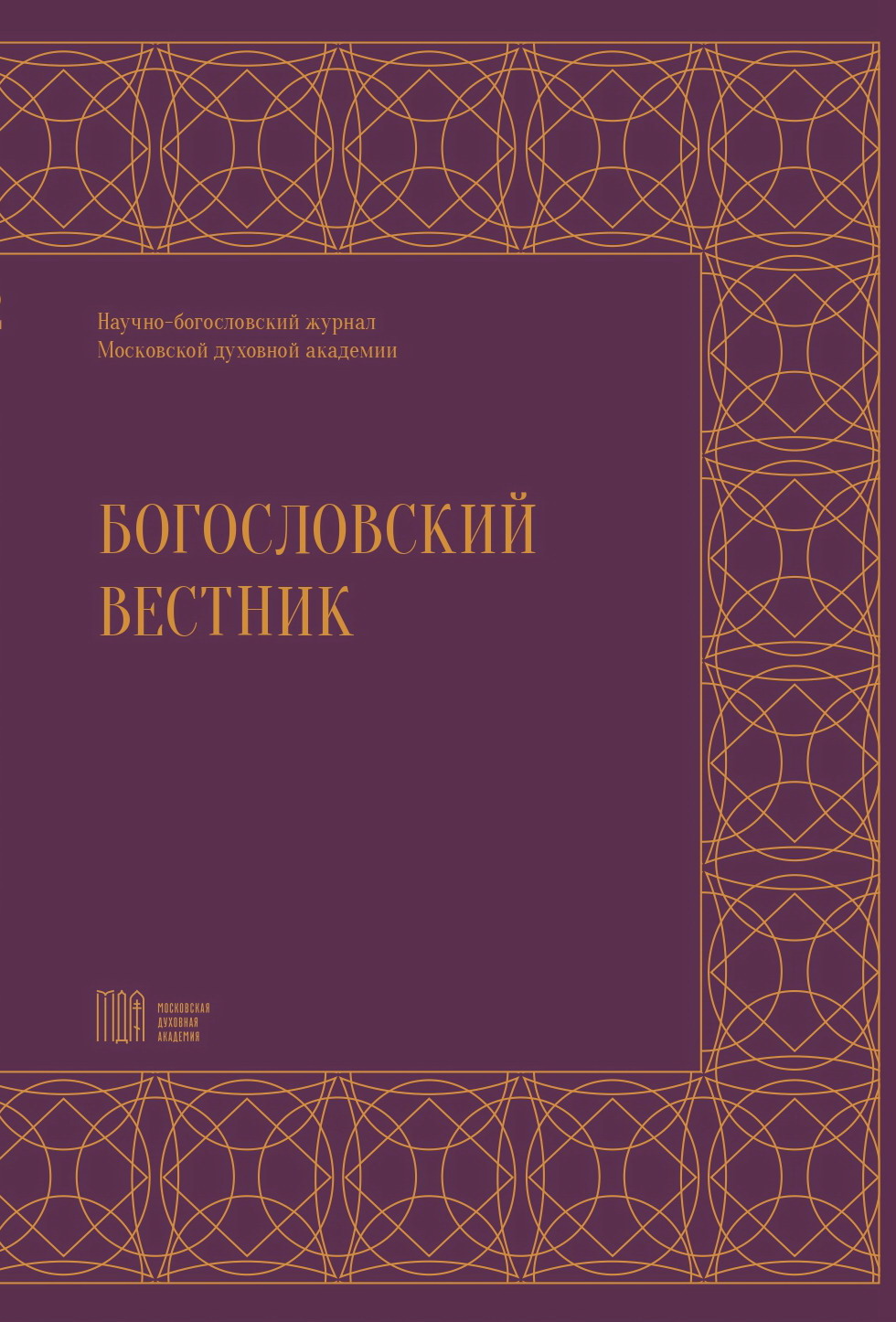Organization of Jewish Worship in Jerusalem During the Teispid Period
DOI:
https://doi.org/10.31802/GB.2023.51.4.002Keywords:
Book of Ezra, Second Temple Period, Teispides, Cyrus the Great, Old Testament Worship, House of God, Solitary Altar, Old Testament Priesthood, Book of Haggai, Book of ZechariahAbstract
The focus of this article is the testimony of the book of Ezra (Ezra 3, 1–6) about the construction of an altar in Jerusalem under Cyrus II (539–530 BC) by the Jews of the first waves of repatriation. The restoration of the cult of Yahweh in Yehud was not only of religious significance, but also played an important role in the administrative and political forms of the Jewish community and in resolving the socio-economic situation in the southern Levant. However, before Darius Hystaspes (522–486 BC), there were no conditions for the construction of a temple, which would become the center of unification of the Jews of this region in the civil-temple community. Based on the text of the book of Ezra, it seems that the construction of the open altar in the first year of Cyrus the Great is the beginning of the construction of the Jerusalem temple. The beginning of the construction of the temple under Cyrus II in the absence of sufficient material resources, Divine sanction in the form of prophecy and clearly formulated royal sanction causes justified criticism in the scientific literature. In addition, the consecration of the altar in the open air contradicted the usual order of consecration of the temple, in which the consecration of the altar occurred at the very end, after the construction of the temple walls, and was combined with the investiture of the priests of this temple. All this casts doubt on the ancient reliability of the text of Ezra 3, 1–6. However, researchers of the initial period of the Second Temple era do not pay attention to ancient Israelite liturgical practices with their gradation of sacred places. The article attempts to explain the message of the indicated pericope of the book of Ezra in the ninth variety of Old Testament liturgical practices and systems of places adapted for worship. According to the hypothesis put forward in this education, the altar discussed in the indicated Conservative narrative could indeed have been built in the reign of Cyrus II, but it was not the altar of the restored Jerusalem Temple, a single altar with limited liturgical functionality.
Downloads
References
Вiblia Hebraica Stuttgartensia / ed. R. Kittel. Stuttgart: Deutsche Bibelgesellschaft, 51997.
Septuaginta, Id est Vetus Testamentum graece iuxta LXX interpretes / ed. A. Rahlfs. Stuttgart: Deutsche Bibelgesellschaft, 1979.
[№ 11]. Marmorstelle in Sardes gefunden // Gusmani R. Lydisches Wörterbuch. Heidelberg, 1964. S. 255.
Bordreuil P., Israel F., Pardee D. Deux Ostraca paléo-hébreux de la collection Sh. Moussaïeff // Semitica. 1996. № 46. P. 49–76.
Malbran-Labat F. La version accadienne de l’inscription trilingue de Darius à Behistun. Roma: Gruppo editoriale internazionale, 1994.
Statuette Naophore du Vatican № 158 [113] // Posener G. La première domination perse en Egypte: recueil d’inscriptions hiéroglyphiques. Le Caire, 1936. P. 1–26.
Бельский В. В. Видение первосвященника Иисуса (Зах. 3, 1–7) и чин поставления священников в Пятикнижии: историко-экзегетический анализ // БB. 2020. № 2 (37). С. 41–58.
Дандамаев, М. А. Вавилония в 626–330 годы до н. э.: социальная структура и этнические отношения. Санкт-Петербург: Петербургское лингвистическое общество, 2010.
Дандамаев М. А. Иран при первых Ахеменидах (VI в. до н. э.). Москва: Изд. восточной литературы, 1963.
Дандамаев М. А. К вопросу о династии Ахеменидов // ППС. 1960. Вып. 5 (68). С. 3–21.
Дандамаев М. А. Политическая история Ахеменидской державы. Москва: Главная редакция восточной литературы изд. «Наука», 1985.
Дандамаев М. А., Луконин В. Г. Культура и экономика древнего Ирана. Москва: Главная редакция восточной литературы изд. «Наука», 1980.
Дьяконов И. М. История Мидии с древнейших времен до конца IV в. до н. э. Москва; Ленинград: АН СССР, 1956.
Емельянов В. В. Ритуал в древней Месопотамии. Санкт-Петербург: Азбука-классика; Петербургское востоковедение, 2003.
Лёзов С. В. Синтаксис глагола в древнееврейском повествовании // Библия: литературные и лингвистические исследования. Вып. 1. Москва: РГГУ, 1998. С. 187–217.
Минаева В. В. Набонид // ПЭ. 2017. Т. 48. С. 219–221.
Олмстед А. Т. История Персидской империи / пер. с англ. А. А. Карповой. Москва: ЗАО Центрполиграф, 2012.
Седов А. В. История древнего Востока: От ранних государственных образований до древних империи / Предисловие В. А. Якобсона; Под ред. А. В. Седова; Редкол.: Г. М. Бонгард-Левин (пред.) и др.; Институт востоковедения. Москва: Восточная литература, 2004.
Циркин Ю. Б. История библейских стран. Москва: Астрель; АСТ; Транзиткнига, 2003. (Классическая мысль).
Ваrеѕ L. Abusir IV. The Ѕhaft Tomb of Udjahorresnet at Abusir. Prague: Karolinum Press, 1999.
Coggins R. J. Haggai, Zechariah, Malachi. Sheffield: Sheffield Academic Press, 1996.
Edelman D. V. The Origins of the Second Temple: Persian Imperial Policy and the Rebuilding of Jerusalem. New York (N. Y.): Routledge, 2014.
Fried L. S. The Priest and the Great King: Temple-Palace Relation in the Persian Empire. Winona Lake (Ind.): Eisenbrauns, 2004.
Handy L. K. Josiah as Religious Peg for Persian-Period Jews and Judaism // Edelman D. et al. (eds.). Religion in the Achaemenid Persian Empire: Emerging Judaisms and Trends / Edited by D. Edelman, A. Fitzpatrick-McKinley, P. Guillaume. Tübingen: Mohr Siebeck, 2016. (Orientalische Religionen in der Antike; 17). P. 72–90.
Haran M. Temples and Temple-Service in Ancient Israel: An Inquiry into the Character of Cult Phenomena and Historical Setting of Priestly School. Oxford: Clarendon Press, 1978.
Kosters W. H. Die Wiederherstellung Israels in der persischen Periode / übersetzt von A. Basedow. Heidelberg, 1895.
Lafont B. Sacrifices et Rituels a Mari et dans la Bible // Revue d’Assyriologie et d’archéologie orientale. 1999. Vol. 93. № 1. P. 57–77.
Saadi-nejad M. Anāhitā: A History and Reception of the Iranian Water Goddess. London: I. B. Tauris, 2021.
Sérandour A. Remarques complémentaires sur la contribution ordonnée par le roi ’ShYHW pour le temple de YHWH // Semitica. 1996. № 46. P. 77–80.
Stern E. Archeology of Persian Palestine // The Cambridge History of Judaism: in 3 vol. / ed. W. D. Davies, L. Finkelstein. Vol. I. Cambridge: Cambridge University Press, 2008. P. 88–114.
The Brown-Driver-Briggs Hebrew and English Lexicon: With an Appendix Containing the Biblical Aramaic. Peabody (Mass.): Hendrickson, 2000.
The Assyrian Dictionary of the Oriental Institute of the University of Chicago: in 21 vols. Chicago (Ill): The Oriental Institute, 1956–2010. (The Chicago Assyrian Dictionary).
Willi-Plein I. Haggai, Sacharja, Maleachi. Zürich: Theologischer Verlag Zürich, 2007. (Zürcher Bibelkommentar).
Downloads
Published
How to Cite
License

This work is licensed under a Creative Commons Attribution-ShareAlike 4.0 International License.








